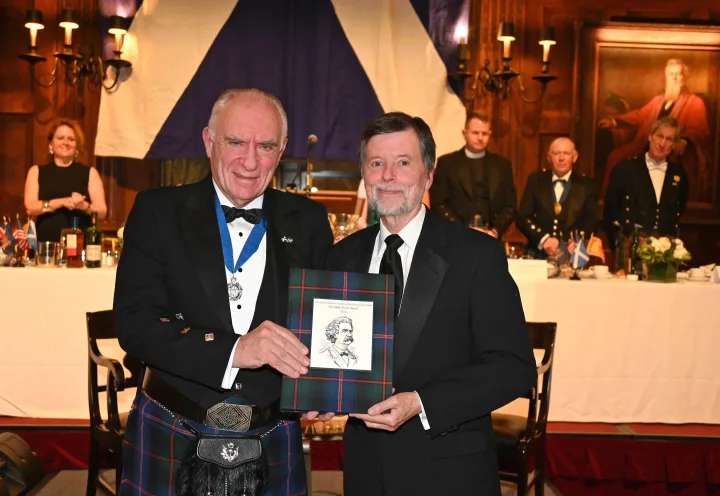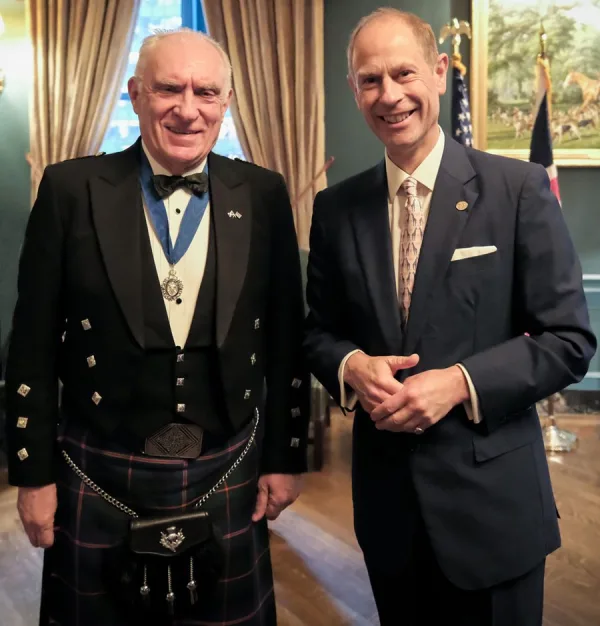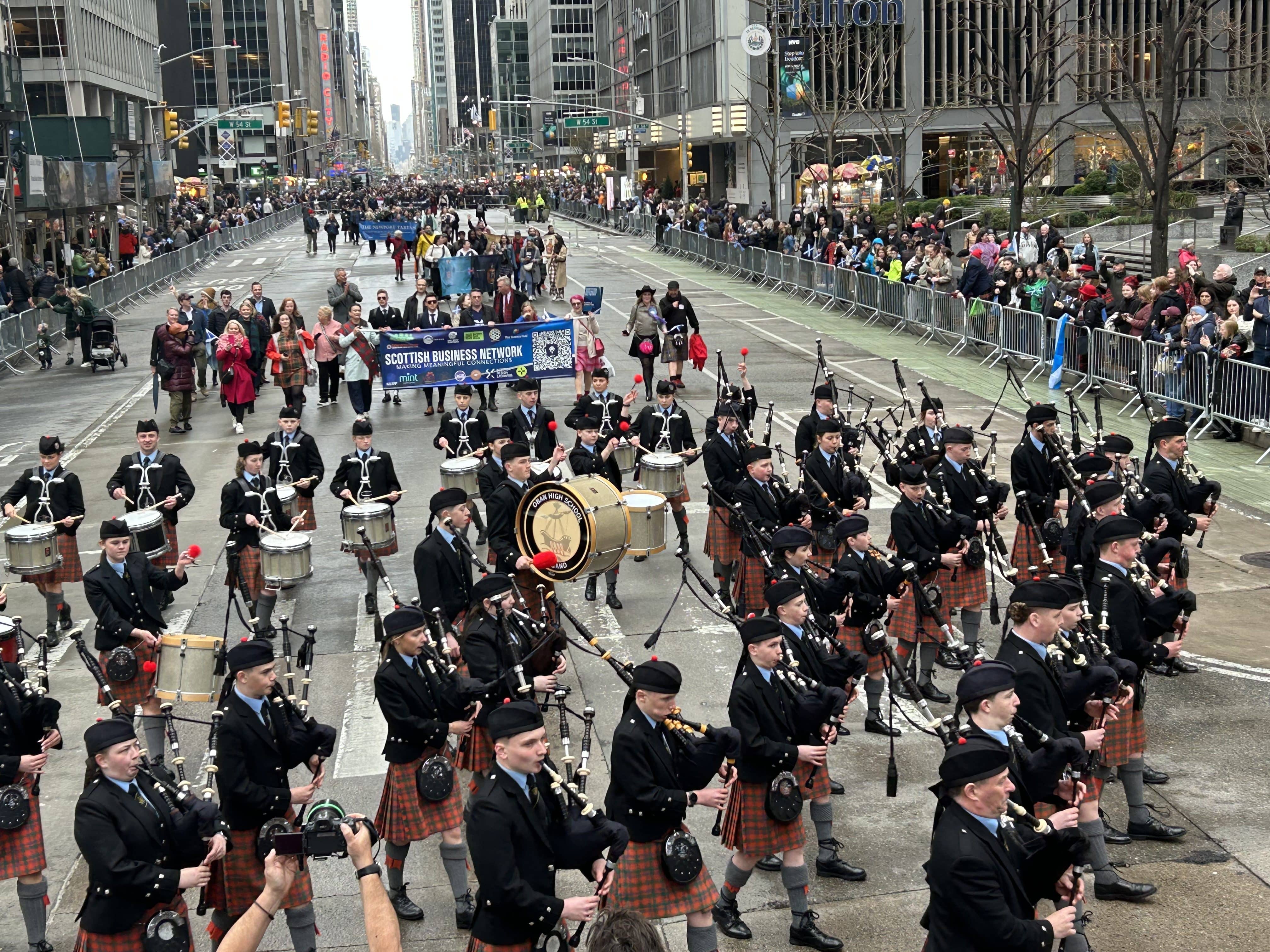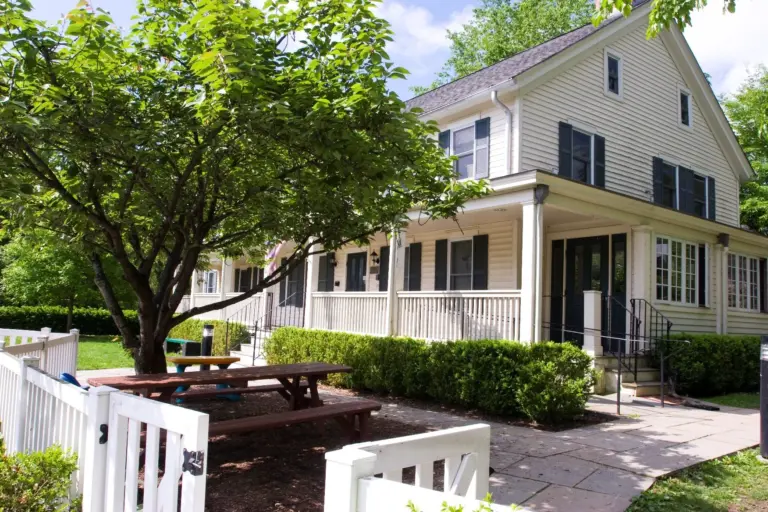
By Anne W. Semmes
John Blankley, a proud Greenwich resident of 42 years, is celebrating his second and f inal year as president of the circa 1756 St. Andrew’s Society (SAS) based in New York City. The SAS with its 507 members offers “charity, fellowship, and scholarship” with its members having “a common Scottish heritage.” And Blankley is proud of his Scottish roots. “My mother was born in Alloa, known as the wee County Clackmannanshire, the smallest county in Scotland in Lowland Scotland.”
Blankley came to be in England after his mother met his father when both joined the RAF during WWII. “But every year we’d go back to Scotland,” tells Blankley, “So, I’m very close to my Scottish family.” Blankley would attend a prestigious college, St. Catherine’s at Oxford University, then marry wife Vera, and be employed by the British Petroleum Company that would send him and family to the U.S. where they settled in Greenwich. And thanks to his then Bank of Scotland, he was soon introduced to the St. Andrew’s Society.
So, over the years has he seen the member numbers grow with the SAS? “We are more or less the same size now as we were then.” But surprisingly, he tells, “Part of the reason for that is in 2010 we allowed women into the Society. It had been an all-male society… When we allowed women in, a fair number of members left. So, we had to build up again with new members and female members.” And now, a quarter of SAS members are female, helped by Blankley’s support. “I was on the board at the time with the president making that decision.”
Blankley’s President’s Message in the SAS 2024-2025 “Pibroch” magazine states there are 28 new members this year, “17 male and 11 female members, the majority of them in the younger age brackets.” So, how does he account for this growing number of younger members? “It’s friends of friends. We have associations with the University of Aberdeen, with the University of St. Andrews. We don’t actively go out advertising.”
In November of 2024, Blankley’s first presidential year, the SAS hosted its 268th annual fundraising Banquet celebrating St. Andrew’s Day. It also honored filmmaker Ken Burns with the SAS Mark Twain Award. Blankley would enjoy interviewing Burns for a half hour. (See adjoining sidebar on Blankley’s Ken Burns interview).
So, the rasion d’etre of the founding of the SAS was for Scots in need. That charity now extends across New York City and its tristate communities as supported by the SAS membership. “We are the oldest charity in the state of New York,” shares Blankley. “We have 38 stipend recipients. These are people that we help with things that sometimes the state can’t provide – help with transport, with food, the New York Presbyterian Hospital’s Children’s wing, and Glasgow Children’s Hospital, and help with burials, with funerals… It’s all under the umbrella of the Society.” Count in that annual 2024 Banquet having raised a record $123,000 plus dollars. Featured was a silent auction and a live auction, with a couple of tours of Scotland. “We have great support from United Airlines who provide us with tickets,” says Blankley, plus there are various stays with “accommodations free.”
Another high point was this spring was the very first Royal Family member visit to SAS by His Royal Highness, The Prince Edward, The Duke of Edinburgh KG KT GCVO. His visit marked a fundraising event to benefit the Duke of Edinburgh’s International Award USA founded by HRH The Prince Phillip.
Remarkable as well is the history of SES, with its founding in 1756, at a time of a few thousands of Scottish immigrants, yet there were three SAS members becoming signers of the Declaration of Independence: Philip Livingston, Lewis Morris, and the Rev. John Witherspoon.
Perhaps the height of SAS fellowship can be found in Tartan Week in early April, when SAS joins with two other Scottish societies in New York: the Caledonia Club and the American Scottish Foundation. “We organize Tartan Week that involves the ‘kirkin o’ the tartan,’ when tartans are taken into churches to be blessed. And then we have a lunch, and then everybody gathers on 44th Street, and we parade down Sixth Avenue waving our Scottish flags, and pipe bands and dancers come over from Scotland.”
Preceding that parade day is an august cocktail party gathering at New York’s Racquet & Tennis Club. “That’s where the Parade Grand Marshall – for this year Alan Cumming – turns up with dignitaries,” tells Blankley, “Including this year for the first time the First Minister of Scotland, John Swinney and the Secretary of State, Ian Murray.”
Add that each year, since 1956, a hefty contribution of $45,000 goes for a year’s graduate study for five graduate students to attend colleges in Scotland or in America – three to Scotland and two to America. And those American students must be from Scottish descent and either residing or attending a college/university within 250 miles of the border of New York State. Colleges attending include the University of Stirling, the University of Glasgow, and the University of St. Andrews. And in America, Georgetown University and Columbia University.
But, lastly, perhaps a SAS member of yesteryear shines the brightest, Alexander Hamilton (not to mention the 45th president, Andrew Carnegie). “For the past three years,” tells Blankley, “We have had a special lecturer on Hamilton – the aspects of his life and what he did.
He founded the Coast Guard, for example… He attended King’s College, now Columbia University” (but unable to graduate due to the outbreak of the Revolutionary War). And “He founded the U. S Treasury. He was the original man who said, ‘We will pay all our debts.’ And that has been absolutely foundational as far as the United States is concerned.”


John Blankley’s Interview with Ken Burns at the 2024 St. Andrew’s Society Banquet
John Blankley shares how Ken Burns had learned of his connection to Scottish poet Robert Burns during Henry Louis Gates, Jr’s PBS show “Finding Your Roots.” “Gates went through the whole genealogy of his history and Burns was amazed.” And, as Burns was presented with the Saint Andrew’s Society’s Mark Twain Award, and his having featured Twain in a documentary, Blankley asked him to address Twain’s work, “Adventures of Huckleberry Finn.” “Ken Burns believes that Mark Twain was a key player in addressing the need of making better race relations in the United States. He thinks that Huck Finn was instrumental in that.”
Blankley moved on to Burns’ latest documentary series on “Leonardo” da Vinci. “So, he expanded on Leonardo who he reckons is the ‘man of the millennium.’ The guy was such a polymath.” Blankley countered with, “Well, some people might say that Einstein might be the man of the millennium.” “Yes, good man,” Burns responded, “But he was great in one area. He wasn’t great in all the areas that Leonardo was – both the great artist and a great scientist.” And then the conversation fell upon history, “and the nature of history because Burns is an historian.”
Blankley addressed how, “As each generation goes by, each generation tries to reinterpret history for its own purposes. And we see it happening now with the current administration that has recently said they’re going to withdraw funding from the Smithsonian because ‘this Smithsonian has a whole series of depictions of our history, some of which is not pleasant.’” Burns responded, “Bad things happen. We are a wonderful country, no doubt. But there is no point in trying to brush over bad things that happen.”
Burns noted how he had made his “life work to explore every avenue,” and present his view of history. “Everybody has his own view of history. What I’m presenting is my view of history. We interpret in our own ways.” But Blankley noted, “Is there such a thing as objective history?” Burns answered, “Well, it says there’s facts, but facts get interpreted. And there is a lot to interpret out there.”
Lastly, Blankley shared with this reporter, “Ken Burns’ daughter Sarah Burns lives in town (Greenwich). She cooperates in all his most recent productions. If you look at the credits of ‘Leonardo’ Sarah Burns is mentioned.”




